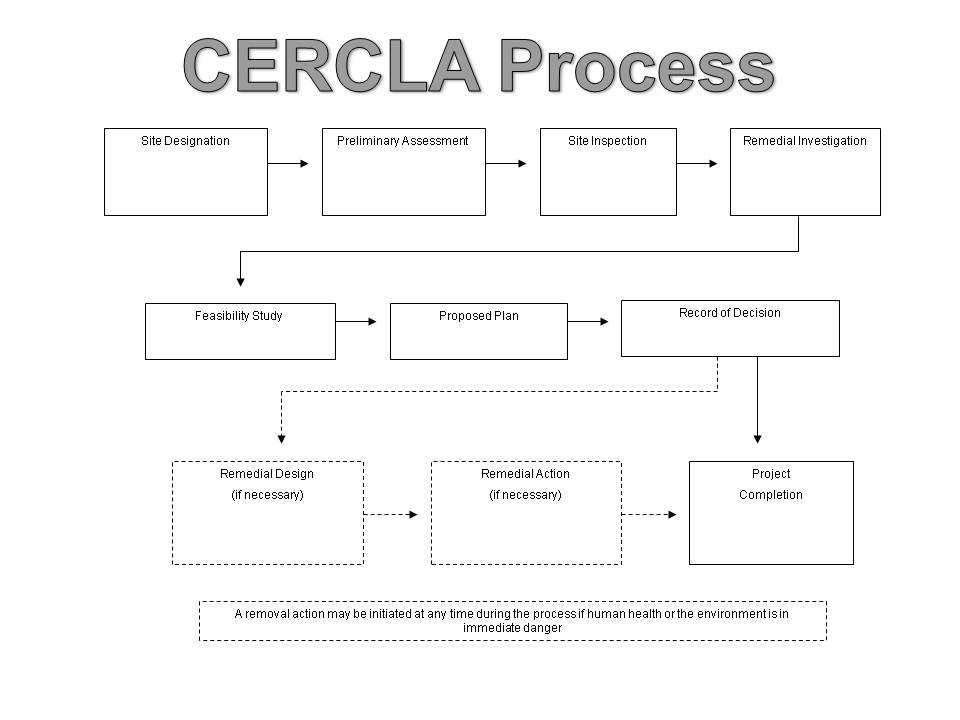What is CERCLA?
The Comprehensive Environmental Response, Compensation and Liability Act (CERCLA) was passed in December 1980 in response to the discovery in the late 1970s of a large number of abandoned, leaking hazardous waste sites that posed a serious threat to both human health and the environment. CERLCA was designed to impose clean up and reporting requirements on the private sector, as well as federal facilities, by:
Identifying those sites where releases of hazardous substances had occurred or might occur, and pose a serious threat to human health and the environment;
What Does CERCLA Do?
CERCLA authorizes clean up responses when there is a release or threat of a hazardous substance into the environment, and sets a framework for accomplishing those actions. Two types of response actions are authorized:
Removal actions are undertaken to immediately stop, prevent, minimize, stabilize mitigate or eliminate the release or threatened release of contaminant to the environment.
Remedial actions provide a more permanent solution to hazardous substance threats and generally involves more extensive study and actions.
What is the Community Right-to-Know Act?
The Right-to-Know Act creates emergency planning, reporting, and notification requirements intended to protect the public in the event of a release of a hazardous substance. Facilities are required to report the presence of hazardous chemical substances in addition to those listed as extremely hazardous.
The Right-to-Know act also includes a system of administrative, civil, and criminal penalties to enforce notification requirements imposed by the U.S. Environmental Protection Agency.
